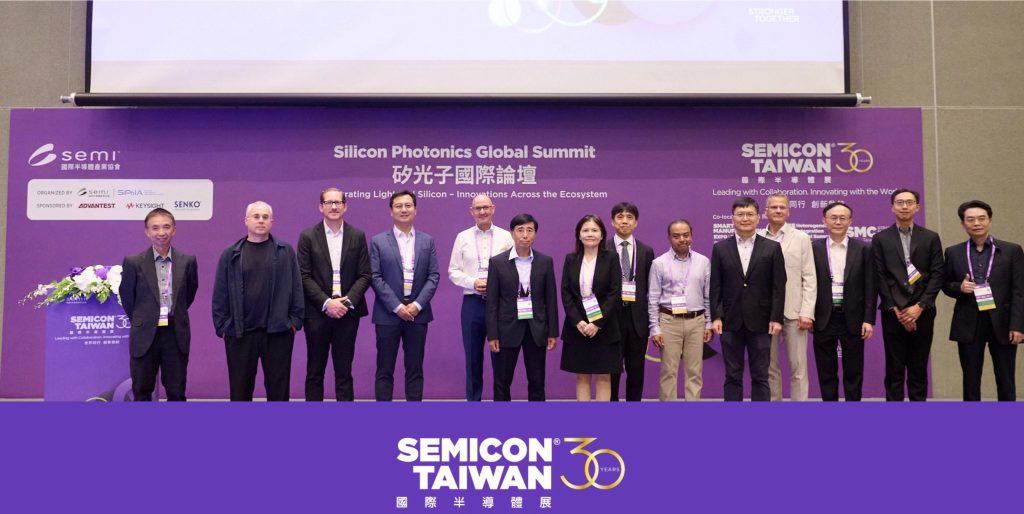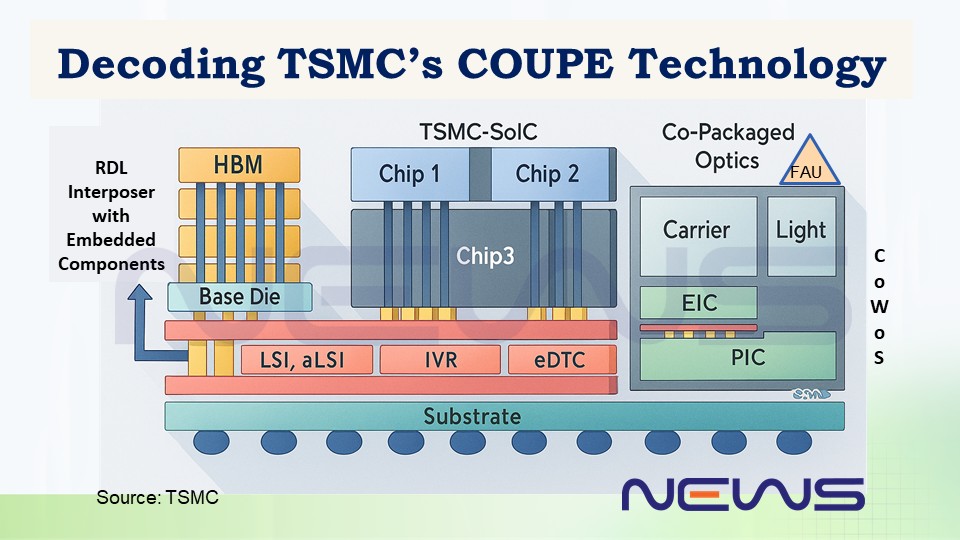As SEMICON Taiwan 2025 kicks off this week, the Silicon Photonics Global Summit took the spotlight on September 8, featuring senior executives from global chip giants such as TSMC, NVIDIA, and Broadcom sharing their latest progress. According to Commercial Times, K.C. Hsu, Vice President of Integrated Interconnect & Packaging at TSMC, called 2024 the “awakening year” for silicon photonics and forecast explosive demand growth in the years ahead as the technology matures.
Notably, TSMC Director Shih-Fen Huang highlighted the foundry giant’s COUPE (COmpact Universal Photonic Engine) at the Silicon Photonics Global Summit. According to TechNews, she stressed silicon photonics’ key edge—using wavelength division multiplexing (WDM) on a single optical fiber. Unlike electrical links that need extra wiring, optical interconnects can scale seamlessly across multiple dimensions, the report suggests.
The TechNews report, citing Huang, adds that by moving from single to dense WDM—and potentially combining multiple wavelengths within the same light wave using advanced modulation—silicon photonics, with its multi-dimensional scalability, could be pivotal in handling AI’s massive data demands.
COUPE: Detail Explained
It is worth noting that as per TechNews, Huang also demonstrated TSMC’s silicon photonics platform “COUPE,” which uses SoIC technology as its foundation.
The system, as the report suggests, connects electronic circuits (EIC) directly to photonic circuits (PIC) on wafers using copper-to-copper bonding and hybrid bonding techniques. The photonic circuit reportedly contains all essential components, including an advanced 200G micro-ring modulator (MRM). Next, an oxide layer covers the wafer and bonds it to another silicon wafer. Finally, tiny holes called dielectric vias are created from the back to establish electrical connections to the substrate, the report adds.

TechNews, citing Huang, highlights modulators as another crucial PIC component, primarily including micro-ring modulators (MRM) and Mach-Zehnder modulators (MZM). As Commercial Times points out, Mach-Zehnder modulators (MZM) excel in high-speed, high-power scenarios, while micro-ring modulators (MRM) provide compact, high-density advantages—making them core components for efficient CPO transmission.
As reported by TechNews, Huang also elaborated on TSMC’s HPC technology platform, which integrates advanced logic chips with high-bandwidth memory (HBM), plus inductors and capacitors, all unified through cutting-edge 3D packaging and silicon photonics solutions. The optical engine can be mounted directly on substrates or installed on interposers depending on application requirements, the report notes.
Platform Capabilities and Next Steps
Looking ahead, TSMC will focus on achieving higher bandwidth, faster speeds, and greater energy efficiency while actively exploring next-generation materials beyond silicon, according to TechNews.
According to Commercial Times, Huang emphasized TSMC’s comprehensive process design kit (PDK) covering waveguides, splitters, and wavelength multiplexers, demonstrating strong photonic integrated circuit (PIC) manufacturing capabilities. With heterogeneous integration and advanced packaging maturing, TSMC is actively advancing optical solution deployment, the report adds.
It is worth noting that MoneyDJ, citing Nikkei, previously reported that TSMC filed 50 patents related to core silicon photonics technology in the U.S. in 2024—roughly double Intel’s 26 filings. In 2023, the two were reportedly neck-and-neck with 46 and 43 filings respectively, while previously Intel had maintained a clear lead.
Additionally, the report further highlights that TSMC plans to mass-produce semiconductors using the latest Co-Packaged Optics (CPO) technology by 2026, whereas Intel is still at the R&D and demonstration stage.

(Photo credit: SEMICON Taiwan)
TrendForce 2025 Infrared Sensing Application Market and Branding Strategies
Release: 01 January 2025
Format: PDF / EXCEL
Language: Traditional Chinese / English
Page: 196
|
If you would like to know more details , please contact:
|













